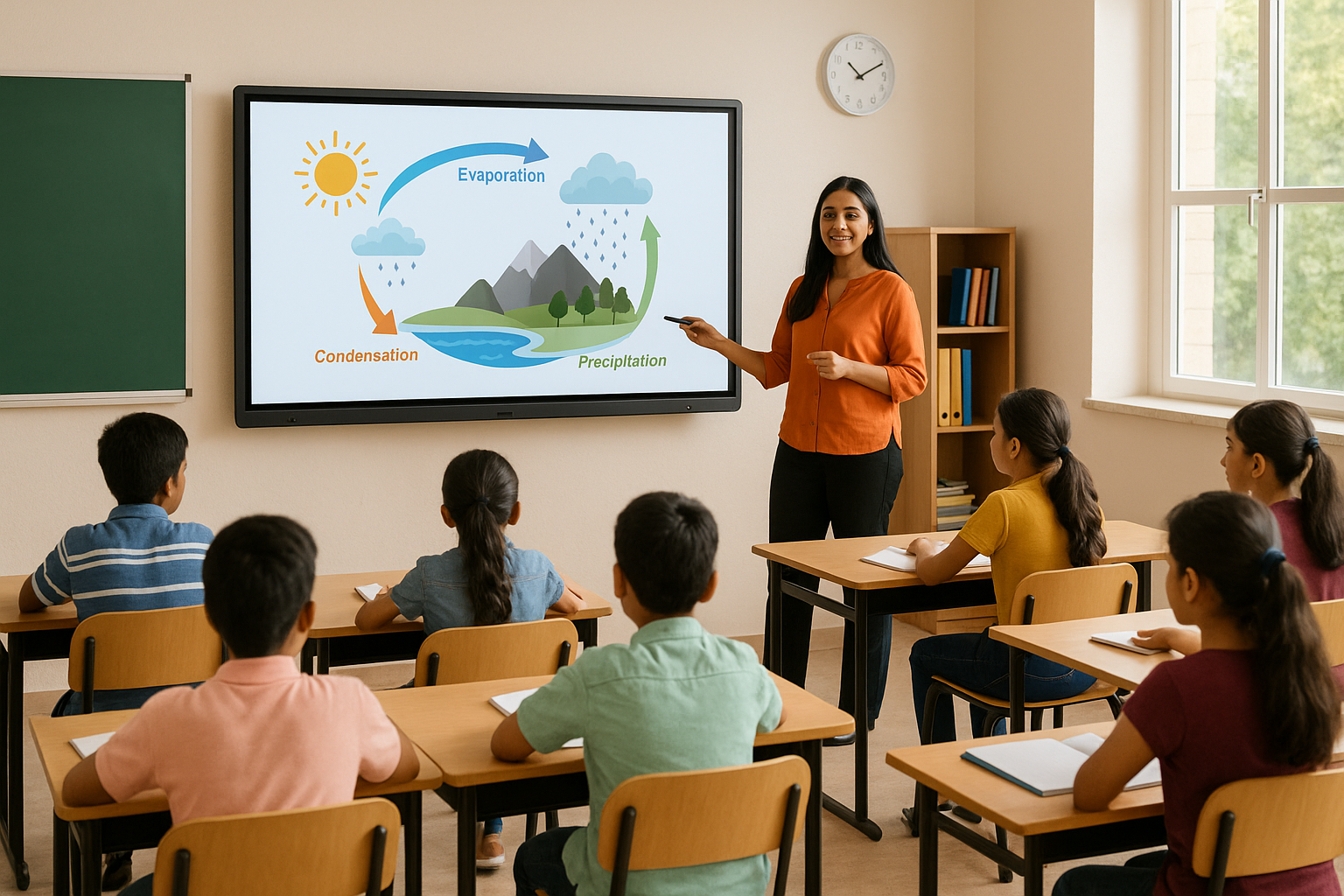How Interactive Panels Help Drive Student Engagement in Classrooms

A “smart” classroom doesn’t always mean an engaging one.
Teachers across India, whether in a school or a university, face challenges with student engagement. Passive note-taking. Blank stares. Phones under desks. Students are physically present, mentally checked out. Even in well-equipped schools, classrooms often feel disconnected.
Part of the problem? Many tools are smart only by name. You’ll find interactive panels that only display, whiteboards that do little more than replace chalk, and systems that require IT staff just to switch screens.
Most traditional setups don’t actually change how students learn. They just make old methods a bit more polished.
But what if your classroom tools could do more than show content? What if they could invite participation? Let’s discuss this in further detail with the right interactive panel solution.
Student Engagement Techniques That Work Better With the Right Interactive Panel
Here’s how teachers can bring proven engagement techniques to life with the help of interactive classroom technology:
1. Assumption-Making with Real-Time Annotation
Pose a real-world scenario: “What happens if we remove trees from a city?” Now ask your students to predict outcomes.
With an interactive panel, you can write down their ideas instantly, clustering related thoughts, adding side notes, and letting students see how the conversation evolves. You’re not just lecturing; you’re building knowledge together.
2. Brain Sketching with Collaborative Display

Split the class into small groups. Each group starts by sketching their ideas on paper or digital devices. After that, they can project their work for the class to review and build on collaboratively. You can use the panel to upload and project these sketches side-by-side.
With touch-enabled drawing tools, students can annotate, compare, and evolve each other’s ideas—visually and interactively. This works especially well in design thinking, STEM, or creative writing exercises.
3. Brainstorming with Digital Post-Its and Voice Capture
Instead of just calling out ideas, students can add their inputs directly via touch, stylus, or voice.
The interactive panel acts as a live idea wall, where you can group, filter, and record responses. Plus, you can save and revisit the session later—great for revision or reflection.
4. Concept Mapping on a Large Touch-Display
Want students to connect the dots between concepts?
Build a collaborative mind map on the interactive whiteboard. Drag and drop keywords, draw relationships, and color-code branches. Students see how ideas build off each other, and remember more as a result.
5. Exaggeration Exercises Using Visual Prompts
Show a basic diagram of a machine or a social setup. Now, ask students to exaggerate its function or behavior.
With drawing tools on the interactive panel, students can stretch, resize, remix, and overstate ideas visually, not just verbally. It’s creativity with a purpose.
6. Laddering to Build Deeper Understanding
Start with a question like “Why is clean water important?” Students add answers directly onto the panel, one under the other, each digging a little deeper.
This laddering technique helps students develop cause-and-effect thinking by visually building on each idea step by step. This allows the entire class to track the progression in real time on the panel.
7. Role-Playing Enhanced by On-Screen Prompts
Set up a debate, customer service scenario, or courtroom simulation. Display character roles or scenario prompts directly on the screen.
Record the role-play using built-in cameras. Let students watch it back, reflect, and improve. Now, role-play becomes more than just acting. It becomes self-driven learning.
8. Storyboarding Using Slide-Based Tools
For project-based learning or creative storytelling, use the panel as a shared digital storyboard.
Students add slides with visuals, transitions, and text. Whether it’s a history timeline or a startup pitch, the visual format keeps everyone on the same page—literally.
9. Post-Up for Large Group Collaboration
Want inputs from a big group?
Use the panel’s post-up feature. Students submit short notes or responses digitally, up to 50 or even 100 participants. The panel then auto-organizes and displays them by theme or color. This turns even large, diverse classrooms into one cohesive learning unit.
Why Interactive Panels Make These Strategies Stick
The right interactive panel isn’t just a screen. It’s a strategy hub.
Here’s why:
- Versatility: Annotation, multimedia display, real-time collaboration, polling—everything in one place.
- Ease of use: Teachers don’t need advanced training, especially when opting for plug-and-play solutions like Roombr Digital Classroom.
- Compatibility: Works with your PDFs, PowerPoints, browsers, and teaching platforms.
- Multi-user interaction: Students can engage with the panel at the same time, not just one at a time.
- Instant recording and sharing: Lessons can be saved, shared, or revisited.
What you get isn’t just better tech. You get a classroom that thinks with you.
Before You Choose an Interactive Panel, Ask These 3 Questions
Before investing in any smart board for classroom use, here are three non-negotiables:
- Can multiple students interact simultaneously? Touchpoints matter. The more students who can use the panel at once, the more engaging your sessions.
- Can it switch easily between tools—browser, notes, video, whiteboard? You don’t want to keep toggling devices or relying on IT staff. Simplicity = smooth teaching.
- Can teachers and students use it independently, without support? If it’s difficult to use, it’s likely to be ignored.
Final Thoughts
In classrooms where engagement is low, even the best intentions fail to drive real results. But when students are invited to interact, contribute, and co-create, learning becomes personal and memorable.
The truth? You don’t need more gadgets. You need the right tool that brings learning to life.
And an all-in-one interactive panel might just be the smartest place to start.
Considering an Interactive Panel? There’s a Smarter Alternative
Discover how Roombr Digital Classroom transforms any wall into a massive interactive learning space—without bulky hardware or complex setups. Designed for Indian classrooms, it doesn’t just offer a panel. It provides a complete student engagement system.
Book your free demo today to discover how Roombr can help transform engagement in classrooms.
Foziya Abuwala
Share
Step Into the future of
Education with Roombr

















